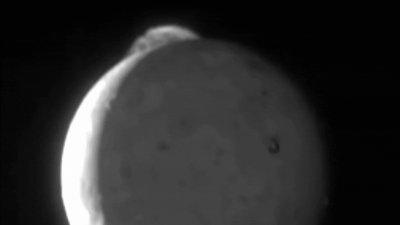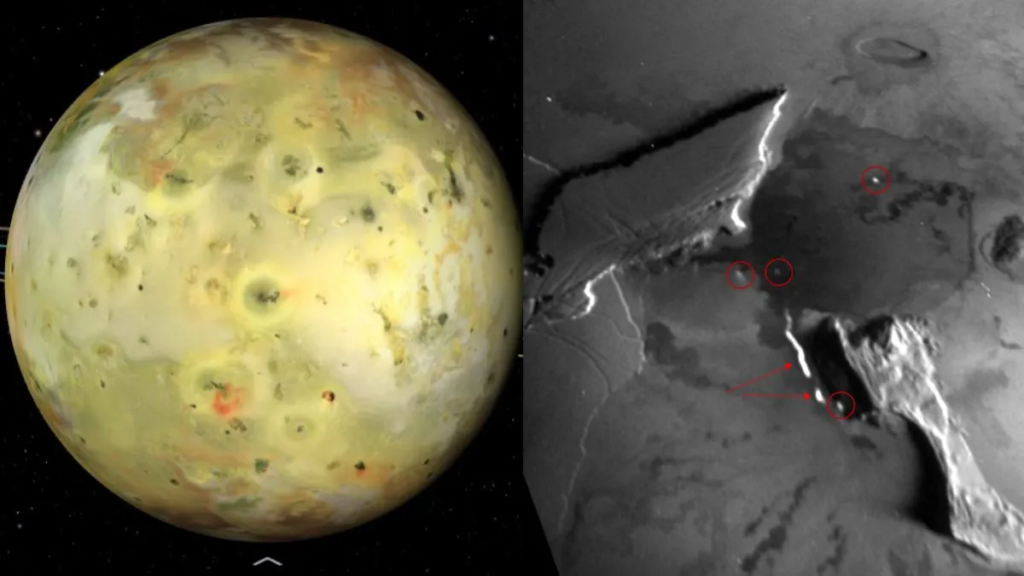NASA’s Juno mission has unveiled mesmerizing details about Io, the third-largest moon of Jupiter and the most volcanic body in the solar system.
Known for its fiery surface and relentless eruptions, Io offers a unique glimpse into volcanic phenomena beyond Earth. Through advanced technology and close flybys, NASA has not only captured active eruptions but also resolved a decades-old mystery about the moon’s volcanic activity.
The Fiery Heart of Io’s Rage
Io’s reputation as the solar system’s most volcanic world is well-earned, with over 400 active volcanoes shaping its extraordinary landscape. These eruptions produce stunning lava flows and plumes that extend far into space, creating a spectacle visible even from NASA’s Juno spacecraft.
The latest revelations from the Juno mission highlight how Io’s eruptions are fueled by localized magma chambers rather than a single, massive magma ocean, as previously hypothesized.
This insight, published in Nature under the title “Io’s tidal response precludes a shallow magma ocean,” changes our understanding of how the moon’s intense volcanic activity is sustained.
Io’s volcanic activity is driven by tidal flexing, a process caused by the gravitational pull of Jupiter. As Io orbits elliptically around the gas giant, the immense gravitational forces squeeze and stretch the moon, generating heat that melts its interior. This process powers the volcanoes and gives Io its molten, volatile character.
Read : Dramatic Fagradalsfjall Volcano Eruption in Iceland: Watch
NASA’s groundbreaking announcement on X (formerly Twitter) showcased a vivid image of an active volcano erupting into space, capturing the essence of Io’s “fiery heart.”
Behold: the most volcanic world in our solar system.
— NASA (@NASA) December 12, 2024
New discoveries from our #JunoMission reveal the fiery heart of Jupiter moon Io's rage. (Yes, that is an active volcano erupting into space.) https://t.co/RZTFBf6S3U #AGU2024 pic.twitter.com/vApviRviyR
According to Juno Principal Investigator Scott Bolton, data from Juno’s close flybys provided unprecedented insights into Io’s interior dynamics, revealing the localized magma sources beneath its surface.
Observing Io’s Volcanic Majesty
The first evidence of Io’s volcanic activity came in 1979 when NASA’s Voyager 1 spacecraft captured images of volcanic plumes, confirming suspicions about its geologically active nature. With a diameter similar to Earth’s Moon, Io’s surface is constantly reshaped by volcanic eruptions, making it a unique subject of scientific curiosity.
NASA’s Juno spacecraft has taken this exploration to new heights. During its recent flybys in late 2023 and early 2024, Juno employed advanced Doppler measurements to map Io’s gravity field with precision.
These observations revealed that Io does not harbor a global magma ocean as previously thought. Instead, it features localized magma chambers that power its numerous volcanoes.

This discovery answered a long-standing question: How are Io’s volcanoes supplied with lava? According to Bolton, understanding the distribution and structure of Io’s magma chambers was key to unraveling the moon’s volcanic mechanisms.
Io’s relentless volcanic activity is not just a scientific marvel but also a geophysical phenomenon that reshapes its surface. The constant eruptions create a dynamic landscape of lava flows, molten lakes, and plumes, giving Io its characteristic yellow, orange, and red hues.
Implications for Other Worlds
The significance of Juno’s findings extends beyond Io. Tidal flexing, the mechanism powering Io’s volcanoes, also occurs on other moons and celestial bodies, making these discoveries relevant to planetary science at large.
Ryan Park, Juno co-investigator, emphasized that understanding Io’s magma chambers offers insights into the interiors of other geologically active moons such as Europa and Enceladus. These moons, which also experience tidal heating, are of particular interest because of their potential to harbor life in subsurface oceans.
Moreover, the study of tidal forces and magma distribution on Io can inform models of exoplanets and super-Earths, expanding our knowledge of volcanic processes in diverse environments. For instance, exoplanets experiencing intense tidal flexing from their host stars may exhibit volcanic activity similar to Io, influencing their habitability.
As Juno continues its mission, it promises to deliver more revelations not just about Jupiter and its moons but also about the broader mechanisms that govern volcanic and tectonic activity across the cosmos.
The Road Ahead for Juno
Since entering Jupiter’s orbit in 2016, the Juno spacecraft has traveled over 645 million miles, capturing breathtaking images and data about the gas giant and its moons. Its recent 66th science flyby over Jupiter on November 24, 2023, marked another milestone in its journey.

Juno’s next close approach, scheduled for December 27, 2024, will bring it within 2,175 miles of Jupiter’s cloud tops. These flybys allow Juno to study the planet’s atmosphere, magnetic field, and surrounding moons with unprecedented clarity.
Io remains a key focus of the mission. Future flybys are expected to provide even more detailed data about its volcanic activity, surface composition, and interior structure. By leveraging advanced instruments, Juno aims to deepen our understanding of this fiery moon and its role in the Jovian system.
The mission also serves as a precursor to future explorations of Jupiter and its moons. Upcoming missions like the European Space Agency’s Jupiter Icy Moons Explorer (JUICE) and NASA’s Europa Clipper will build on Juno’s findings, focusing on Europa’s subsurface ocean and the potential for life.
A Glimpse Into the Cosmos
Io’s volcanic eruptions offer a spectacular reminder of the dynamic and diverse nature of celestial bodies in our solar system. From the tidal flexing that powers its fiery activity to the localized magma chambers that sustain its eruptions, Io stands as a testament to the complex interplay of geological and gravitational forces.
As Juno continues to unveil the secrets of Jupiter and its moons, it opens new doors for understanding not just our solar system but also the broader universe. Io’s volcanic rage, captured so vividly by NASA, is a small yet powerful glimpse into the wonders that await discovery among the stars.
let’s enjoy few years on earth with peace and happiness….✍🏼🙏

